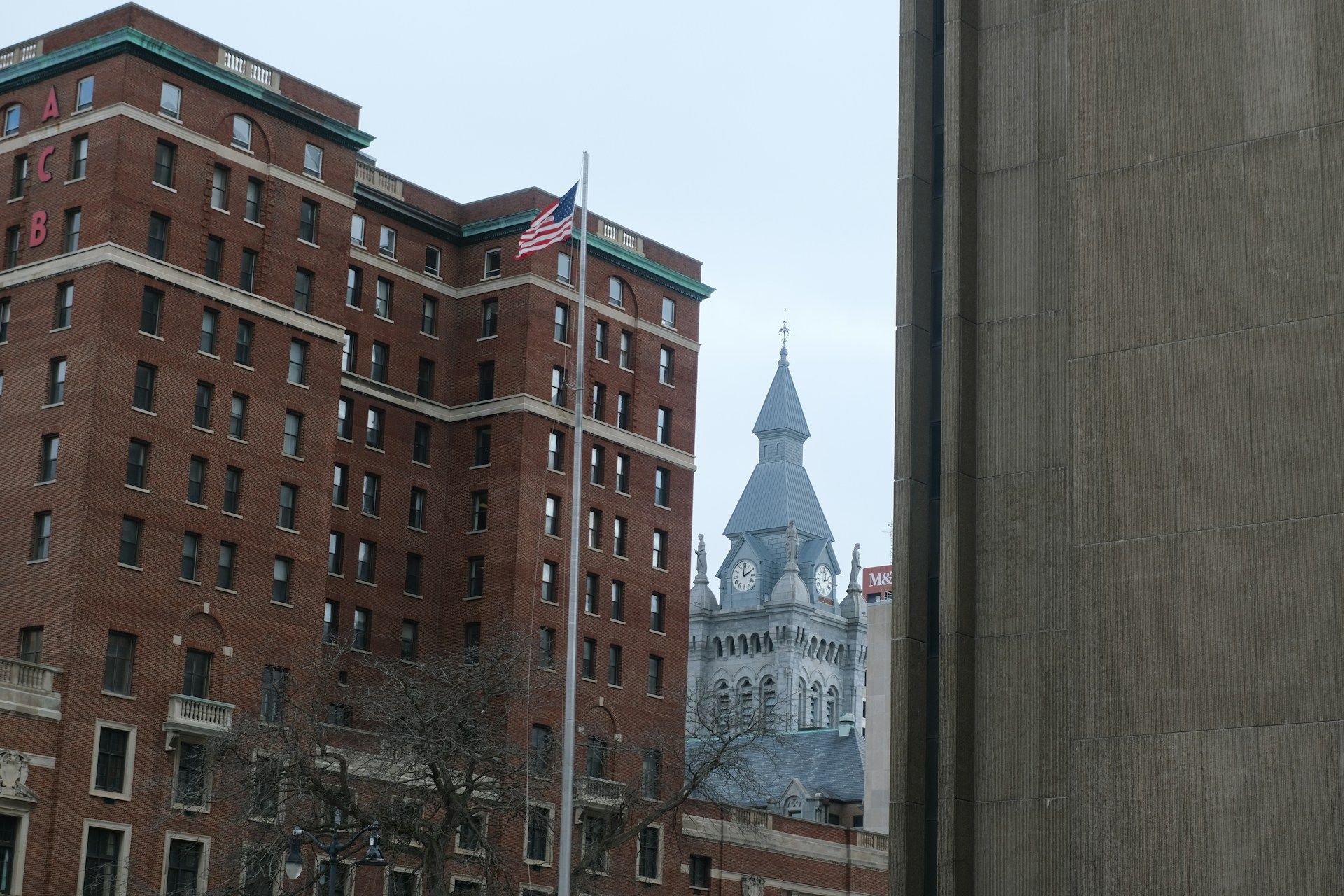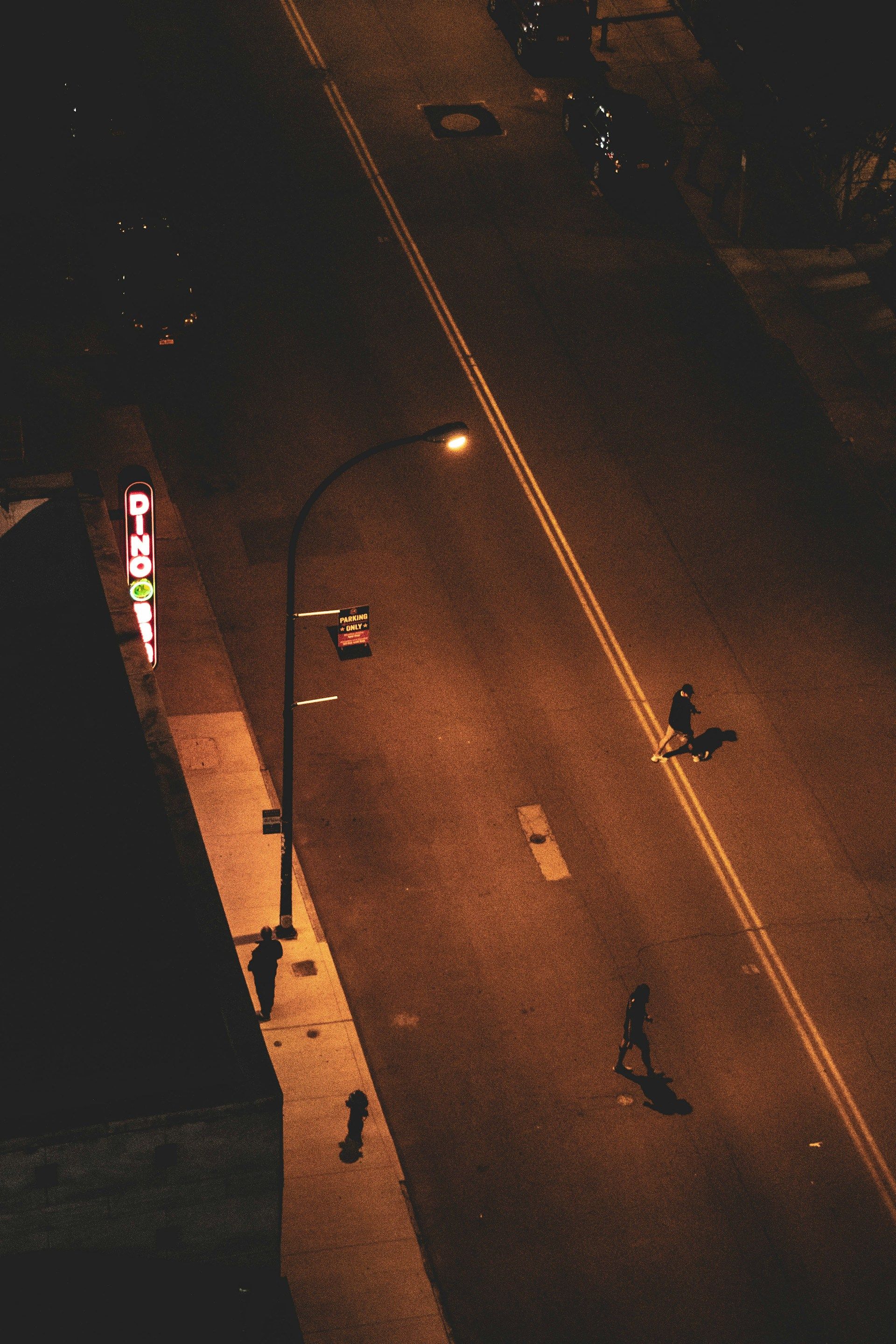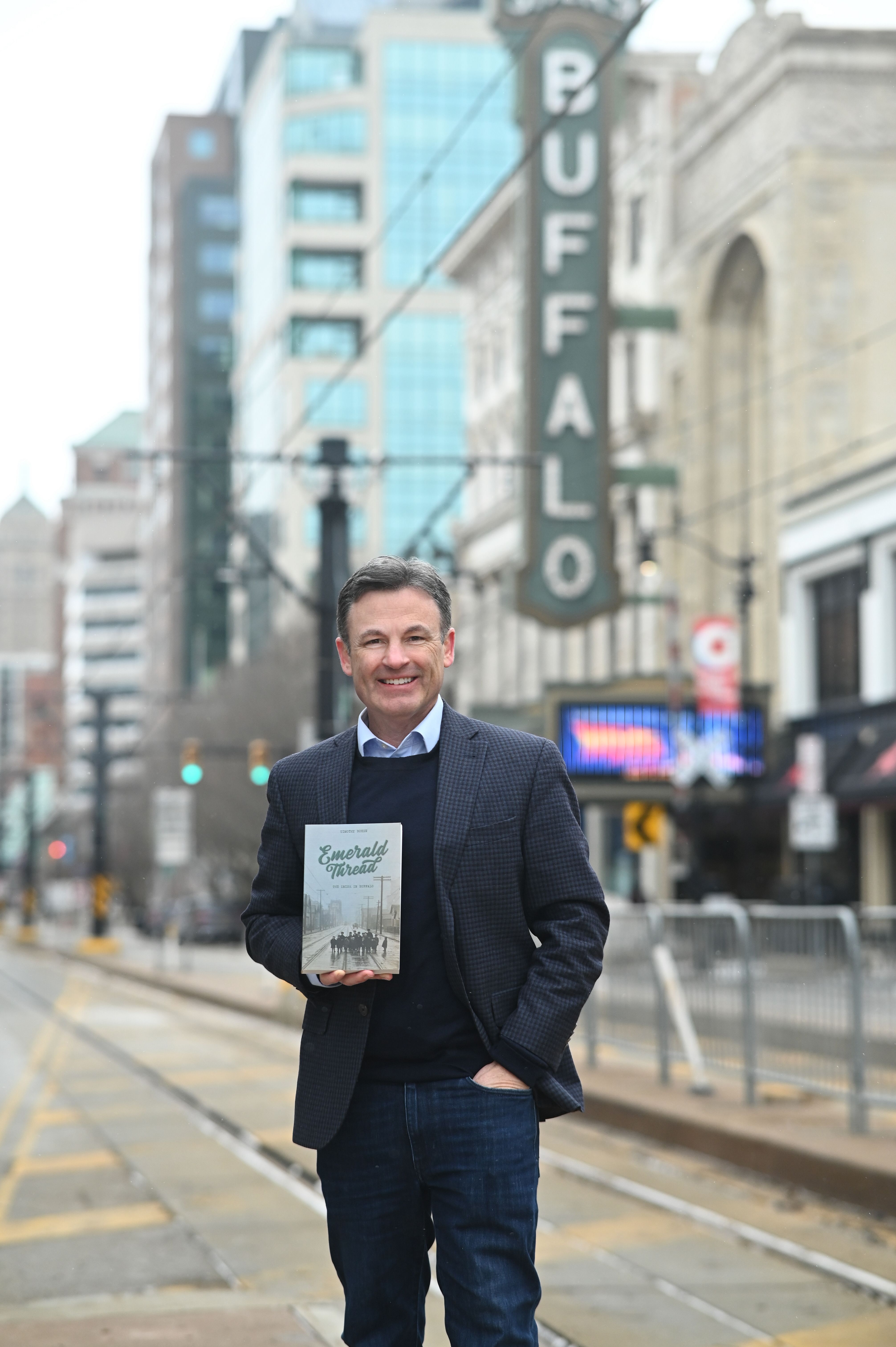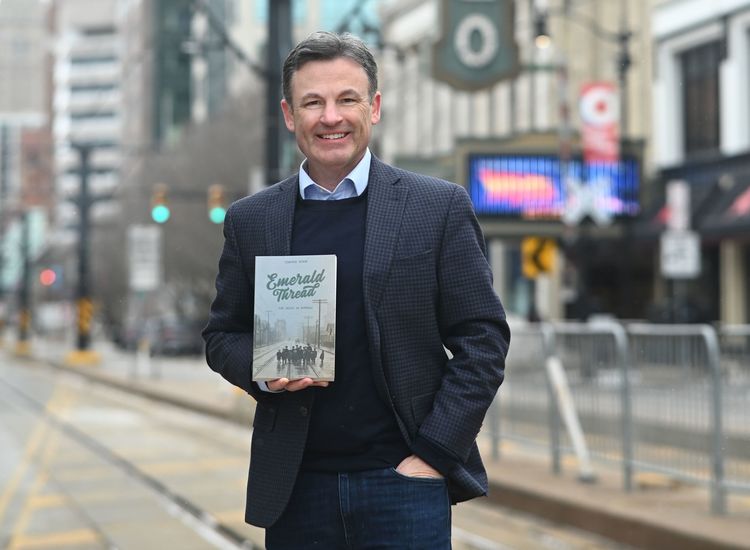Ahead of the Heroes of Irish America Awards in Buffalo, NY, author Tim Bohen reflects on the city's storied Irish links.
Irish immigrants flocked to Buffalo due to the success of the Erie Canal. This canal transformed villages like Buffalo into thriving boomtowns and solidified New York's reputation as the Empire State. Buffalo’s strategic location at the eastern end of Lake Erie generated thousands of waterfront jobs in the grain transshipment industry, as well as opportunities in building railroads, canals, and various infrastructure projects.
The Irish immigrants, in search of better prospects, seized many of these positions. Within a few generations, they not only built Buffalo but also claimed their stake in the American Dream.
From Buffalo’s earliest days, the Irish and their descendants made a significant impact on the city. Samuel Wilkeson, the son of immigrants from Ulster, constructed Buffalo's harbor in 1821 and led the city’s efforts to become the western terminus of the Erie Canal.
BUFFALO RISING: The 'Capital of Irish America' captured by Anil Baki Durmus on unsplash.com
Irish canal workers blasted miles of solid stone north of Buffalo in Lockport, tackling one of the most challenging sections of the canal. In the 1840s and ’50s, Irish American John Timon, Buffalo’s first Catholic bishop, founded numerous charitable institutions with assistance from the Irish Sisters of Charity and the Mercy Sisters. Some of these charities still exist today.
Politicians played a crucial role in stabilizing many of Buffalo’s Irish community by securing jobs for them as teachers, police officers, and firefighters. Buffalo’s Irish politicians also made significant contributions at the state and federal levels. Kathy (Courtney) Hochul, the granddaughter of Irish immigrants, became New York State's first female governor. Paul Fitzpatrick of Buffalo, as the New York State Democratic Chairman, helped President Harry Truman secure the presidency in 1948. Without the backing of Buffalo Democratic Chairman Peter Crotty, John F. Kennedy might not have been the Democratic presidential nominee in 1960.
The complete 1982 RTÉ Players production of James Joyce's #ULYSSES will be broadcast on @RTERadio1Extra on #Bloomsday2020. A website with "explainer" programmes as well as Joycesongs (RTÉ Concert Orchestra) and more should be live today https://t.co/ROiWJZQLcK pic.twitter.com/BzfK3SrXF8
— Bloomsday Festival (@bloomsdayfest) June 8, 2020
In the field of labor, Thomas V. O’Connor from Buffalo served as the president of the International Longshoremen’s Association; Rowland Mahany was a U.S. Secretary of Labor; and Irish American James Mead, the only United States Senator from Buffalo, was a strong advocate for labor in Congress.
General William “Wild Bill” Donovan, who led New York’s “Fighting 69th,” was one of the most decorated soldiers of World War I. During World War II, he founded the OSS, which later became the CIA. Donovan is regarded as the “Father of American Intelligence.” C. Wade McCluskey, a South Buffalo native, was one of the heroes of the Battle of Midway, a pivotal event that changed the course of the Pacific Campaign during World War II.
The Buffalo Irish contributed significantly to the cause of Irish independence. In 1866, the Fenians launched their attack against Canada from Buffalo, marking it as the most significant military campaign against British crown forces outside of Ireland in the country’s struggle for independence. Over the years, Buffalo became one of the leading cities hosting national conventions for the Irish Land League, United Irish League (UIL), Clan Na Gael, and Sinn Féin. Buffalo also served as a major fundraising center for the Irish independence movement, with Charles Stuart Parnell, John Dillon, Michael Davitt, John Redmond, John Devoy, and Eamon de Valera all visiting.
In the arts, Chauncey Olcott became the greatest Irish singer of his time, celebrated for writing "When Irish Eyes Are Smiling" and "My Wild Irish Rose" (above on YouTube) and for introducing many other songs that are now part of the Irish-American music canon.
Buffalo’s Peggy O'Neil was one of the leading stars on the London stage in the early twentieth century, and Kitty O'Neil (no relation) was the top Vaudeville dancer of her time and a crowd favorite in New York City for two decades. First Ward native Michael Shea was a prominent figure in Vaudeville and built over a dozen entertainment venues, including Buffalo's most renowned theater, Shea's Buffalo. Billy Sheehan is considered one of the greatest rock bassists of all time.
The Buffalo Irish also contributed as writers and journalists. F. Scott Fitzgerald spent much of his youth in Buffalo, and his experiences profoundly influenced the themes in his novels The Great Gatsby and Tender Is the Night. In the modern era, the Buffalo Irish dominated local journalism and launched a few national stars, such as Tim Russert (Meet the Press) and Margaret Sullivan (New York Times and the Washington Post).
Buffalo at night by Gabriel LaMarca on unsplash.com
In sports, Buffalo Irish American Jimmy Collins, a Hall of Fame third baseman and team manager, led Boston to victory in the first-ever World Series in 1903. Buffalo has produced two world champion boxers, Jimmy Slattery and Jimmy Goodrich, as well as a three-time NHL Stanley Cup champion, Patrick Kane of the Chicago Blackhawks. Jim Kelly, who led the Buffalo Bills to four Super Bowls, is among the region’s most philanthropic citizens. Emily Regan is the only Olympic gold medalist in rowing from Buffalo, and Irish American Mary Robertson Wittenberg significantly expanded the New York City Marathon during her tenure as CEO of the New York Road Runners.
You might call him the king of the hot corner.
Hall of Famer Jimmy Collins, who revolutionized the style of play at third base in the early 20th century, was born on this day in 1870. pic.twitter.com/LGQ3MYluJX
— National Baseball Hall of Fame and Museum ⚾ (@baseballhall) January 16, 2022
The world’s largest collection of James Joyce materials is housed at the University at Buffalo, making it a favored destination for Irish dignitaries, actors, and poets. Thanks to Congressman Tim Kennedy and Governor Kathy Hochul, this collection will soon be housed in a $10 million museum, ensuring that visitors continue to come to Buffalo for years to come.
The story of the Buffalo Irish is one of resilience, ambition, and lasting influence. As Buffalo continues to evolve, the Emerald Thread remains deeply woven into its fabric, serving as a testament to generations who have worked, fought, and dreamed of building a better future.
Tim Bohen is the author of Emerald Thread: The Irish in Buffalo, which can be purchased at Barnes & Noble online. More information about his book can be found at www.timothybohen.com. Tim can be emailed at tim@oldfirstward.com









